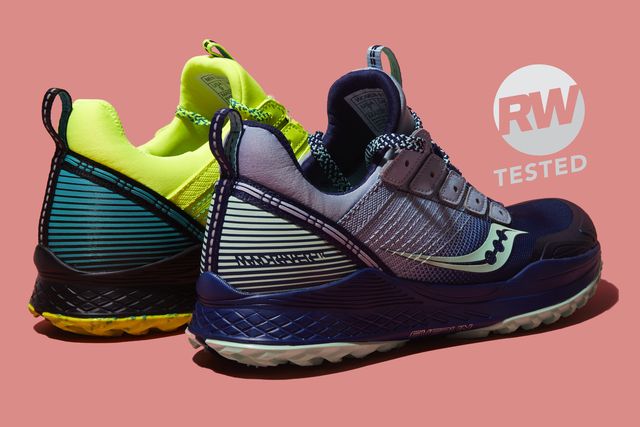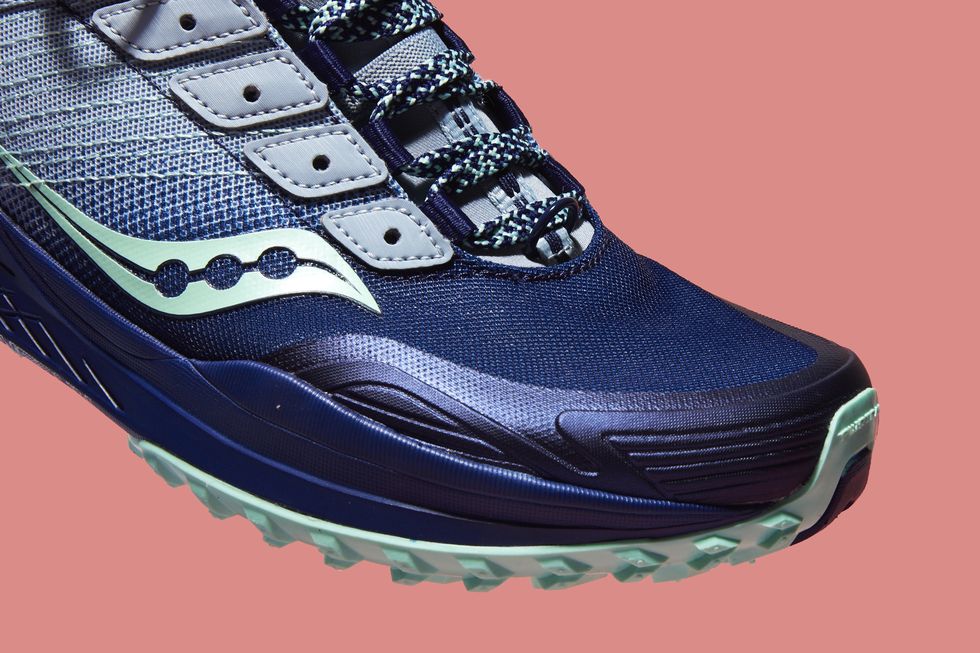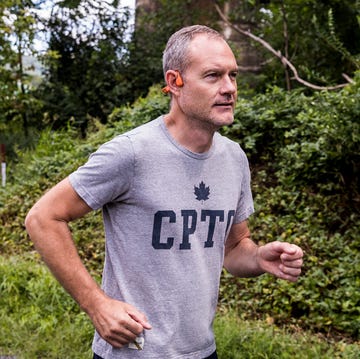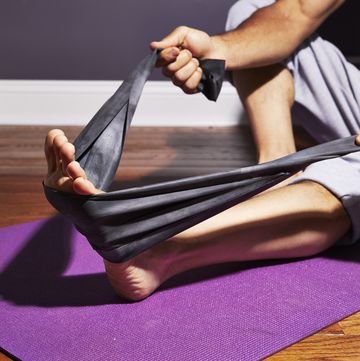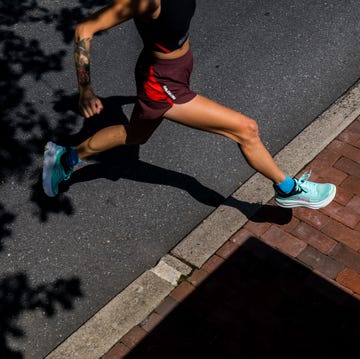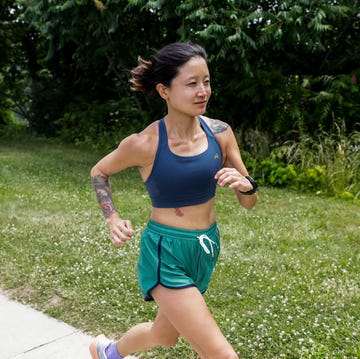The RW Takeaway: A customizable trail shoe that delivers technical features if you need them
- Poke holes in the sole for drainage; drive in screws for extra traction.
- A mix of lugs deliver all-conditions grip.
- The reinforced upper is durable enough for rugged terrain.
Price: $110
Type: Trail
Weight: 10.4 oz (M), 9.1 oz (W)
Drop: 5 mm (M), 6 mm (W)
Buy Men’s Buy Women’s More Images
I absolutely love the concept of this trail shoe, because I strongly believe that a running shoe is just a tool, and we should tweak it as needed to make it work the way we want. By that I mean you shouldn’t be afraid to punch an extra eyelet in the upper to change how you lace the shoe, or even slash the mesh with a knife to relieve pressure or irritation.
Saucony has taken that concept and calls out places where you might customize this shoe. Do you run a course with lots of stream crossings? Break out the power drill and poke holes in the outsole—obviously do so when the shoe is off your foot. Labels on the rubber even tell you what size drill bit to use. Or maybe you want to wear the shoe in the winter on slippery roads? More markings show you where to place the screws and which size to use. There are also multiple lacing options—ghillies (fabric loops) and eyelets (holes)—so you can cinch the shoe tight.
On the run, we found the mix of EVA midsole and thin Everun topsole delivered a protective ride on rugged ground, comparable to the brand’s tank-like Xodus.
A Trail-Taming Sole
It’s easy to look at all the labels on this shoe and think it’s some kind of gimmick. But, even for a $110 shoe, it has plenty of serious trail cred. That all starts underfoot, where testers said the rubber locks onto mixed surfaces, even without any additional hardware. We love the multi-directional teeth and the alternating rows of V-shaped lugs and angled barbs. Whenever we climbed loose scree or descended on slick dirt, we felt firmly planted. Some testers wished the rubber was a little softer and stickier—which would work better on wet rocks.
Atop that rubber is a protective, soft midsole that testers raved about. The forefoot, in particular, is relatively thin but soft, which we loved on the rocky trails we have here in Pennsylvania. The shoe doesn’t have a rock plate, so ordinarily that means some battered soles. But the Mad River delivered comfort no matter how long or fast we ran. Helping with that underfoot comfort is a thin layer of bouncy Everun foam that Saucony has added just below the sockliner. It gives a little extra spring with each stride than the EVA midsole alone would.
Saucony Nailed the Fit
Every tester praised the shoe’s roomy, but not sloppy, toe box. It’s plenty wide, which some felt helps with durability, too. “Durability by far is the best thing,” said one longtime trail shoe tester. “I really like the new upper material. Saucony works well for me, but in the past the shoes broke down too quickly. Either the tread delaminated and came off, or the uppers split out usually at the pinky toe. I run a lot on the rocky AT and the traction and shoe construction protects my feet.”
Part of that extra protection comes from a burly toe cap that shields you from kicked stones. The midfoot has been bolstered, too, through a non-traditional use of stitching. Instead of thick, heavy overlays, Saucony added 10 stitched lines of thread, running on an angle from the eyelets back toward the heel, so the fabric there can’t stretch. It delivers a locked-in feeling, without any bulk.
What One Tester Said
Jeff M., tester since 2018
Arch: medium | Gait: neutral | Footstrike: midfoot
“The best feature for me is the ride. I have a tendency to wear shoes with very little cushioning for racing, but they really beat up my feet a lot—both for road and trail. I recently tested a pair of Saucony Omni ISO 2 road shoes and found them to be a great high mileage pair. So when I received the Mad River TR, I thought that they would be worth trying. I was instantly impressed with how comfortable they are. My normal trail race shoe is the Hoka One One Evo Jaws. It was so refreshing to wear the Sauconys on my training runs. Right out of the box they fit great, no foot sliding and the cushioning did not reduce the responsiveness. It is a hard thing to [find] the right combination of cushioning and responsiveness. Saucony definitely put a lot of thought into this shoe and it shows. It’s a great neutral, high-mileage, go-to trail shoe. I would race in them for distances over 25K, but I like a more responsive shoe for half marathons and under.”
Jeff is Runner-in-Chief for Runner’s World and the director of product testing. He has tested and reviewed running shoes, GPS watches, headphones, apparel, and more for nearly two decades. He regularly tests more than 100 pairs of shoes each year, and once had a 257-day streak running in different models. Jeff can usually be found on the roads, racing anything from the mile to a marathon, but he also enjoys racing up mountains and on snowshoes. When he’s not running, you’ll probably find him hanging from a ladder making repairs and renovations to his house (he’s also director of product testing for Popular Mechanics).
